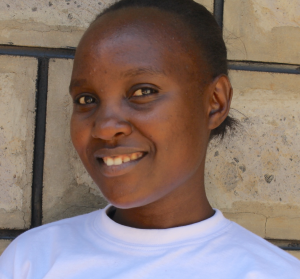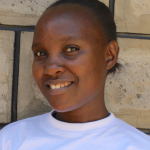Every day, the 413 pupils of Kitagwa Primary School report to class at 7:00 am while carrying jerrycans filled with water from home. They start their school day by using some of this water to clean their latrines while the rest of it is taken to the kitchen for storage. Then, throughout the day, the stored water gets used for drinking and cooking.
By lunchtime, there is always the need for more water, so the majority of pupils that head home for lunch are expected to carry back another container full. This second batch of water is primarily used for drinking and cleaning the utensils dirtied at lunch.
Classrooms are only cleaned on Fridays, though most of the afternoon always gets wasted because of the time it takes students to collect enough water to complete the chore. Whether it is the average day after lunch or Fridays during cleaning, some pupils abscond classes for the rest of the day instead of returning since they do not always want to carry water back with them, or simply because there is no stored water at home when they get there.
With just 17 teachers and staff at Kitagwa Primary, the adults are not able to monitor the water sources students choose at home. Even though some of the water students collect is originally clean, their containers are not. A quick spot check revealed jerrycans with dirt and growths on the inside and no lids on the outside; even clean water would be contaminated inside one of these jugs. Because water is combined for use at school, even 1 contaminated source means everyone is at a heightened risk for waterborne diseases. There are many pupils ill at any given time in this school, most of whom are treated for typhoid, diarrhea, and stomachaches due to the consumption of unsafe water at school.
"The lack of safe water is very inconveniencing for me. I have to carry drinking water from home and sometimes I forget to carry my water bottle to school. On such days, I get very dehydrated and I'm unable to perform my duties as required," said Head Teacher Beth Isalikho.
The students face even more exhaustion as they are the ones making multiple trips and carrying heavy containers back and forth every day. When students do finally get back to class, they are often too tired to focus well; hence the discouragement of returning for the afternoon lessons. All of these interruptions and missed classes coupled with the absenteeism driven by waterborne diseases are negatively affecting students' academic performance.
Since water is at the heart of hygiene and sanitation matters, the situation at Kitagwa Primary School is wanting.
"I also carry water from home but I can only carry enough for drinking. This means that I do not wash my hands after visiting the toilet and it would be hypocritical to teach my pupils the importance of handwashing when I do not practice the same due to lack of sufficient water in the school," said Teacher Irene Kadesa.
There are very few latrines compared to the student population, and their daily cleaning is minimal due to the severe water rationing the school is already doing. Many of the girls' toilets lack doors and the boys' latrines are crumbling. There is a partially constructed latrine block, but it is nowhere close to completion to be used. Local education development funds have promised more resources to complete these latrines, but its arrival has been delayed and there is no certainty of its coming. The overcrowding and overuse of the other latrines, coupled with the total absence of handwashing stations, increases the risk of fecal-oral disease transmission and related absences.
What We Can Do:
Rain Tank
A 75,000-liter rainwater catchment tank will help alleviate the water crisis at this school. The Kitagwa Primary staff have also decided they will share limited access to the rain tank with a subset of community members - mostly pupils' parents - during school hours and with school permission. The school will help collect the needed construction materials such as sand, bricks, rocks, and water for mixing cement. We will complement their materials by providing an expert team of artisans, tools, hardware, and the guttering system. Once finished, this tank will begin catching rainfall that will be used by the school’s students and staff for drinking, handwashing, cooking, cleaning, and much more.
We and the school strongly believe that all of these components will work together to improve standards at this school, which will help lead to better student academic performance and will help to unlock the potential for these students to live better, healthier lives.
Handwashing Stations
There is currently nowhere for students to wash their hands after using the latrines or before eating lunch, let alone the water to do so.
The student health club will oversee the 2 new handwashing stations we will provide, and make sure they are kept clean and in working condition. The club leaders will fill the handwashing stations with water daily and make sure they are always supplied with a cleaning agent such as soap or ash.
VIP Latrines
2 triple-door latrine blocks will be constructed with local materials that the school will help gather. 3 doors will serve the girls while the other 3 will serve the boys. All of these new latrines will have cement floors that are designed to be easy to use and to clean. And with a rain tank right on school property, there should be enough water to keep them clean.
Training on Health, Hygiene, COVID-19, and More
We will hold a 1-day intensive training session with students, teachers, and parents. This training will cover a wide range of topics including COVID-19 symptoms, transmission routes, and prevention; personal and environmental hygiene; and the operation and maintenance of the rain tank, latrines, and handwashing stations. There will be a special emphasis on handwashing.
Our team of facilitators will use a variety of methods to train, including participatory hygiene and sanitation transformation, and asset-based community development. We will initiate a student health club, which will prepare students to lead other pupils into healthy habits at school and at home. We will also lead lectures, group discussions, and provide illustrative handouts to teach health topics and ways to promote good hygiene practices within the school including handwashing and water treatment. We will then conduct a series of follow-up trainings before transitioning to our regularly scheduled support visits throughout the year.

 Rainwater Catchment
Rainwater Catchment
 Rehabilitation Project
Rehabilitation Project

















































